Some posts on this site contain affiliate links. If you book or buy something through these links, I earn a small commission (at no extra cost to you). Take a look at my privacy policy for more information.
This post is from my South America backpacking diaries, all about the Potosi Mine Tour in Bolivia. It was first published in 2014 but I understand that very little has changed today.
From Sucre, we began our journey south by travelling down to Potosí. At 4090m above sea level, it’s one of the highest cities in the world. So after the warm sunshine of Sucre, the colder air and freezing nights were a bit of a shock.
The site of an enormous and once-prosperous silver mine, the city has an air of decaying grandeur which I found strangely beautiful.
I loved the fading, colourful paint of colonial buildings, the ornate church façades tucked between markets and ugly buildings, and the hidden notes of beauty almost lost behind tangles of telephone wires and ugly, traffic-strewn streets.
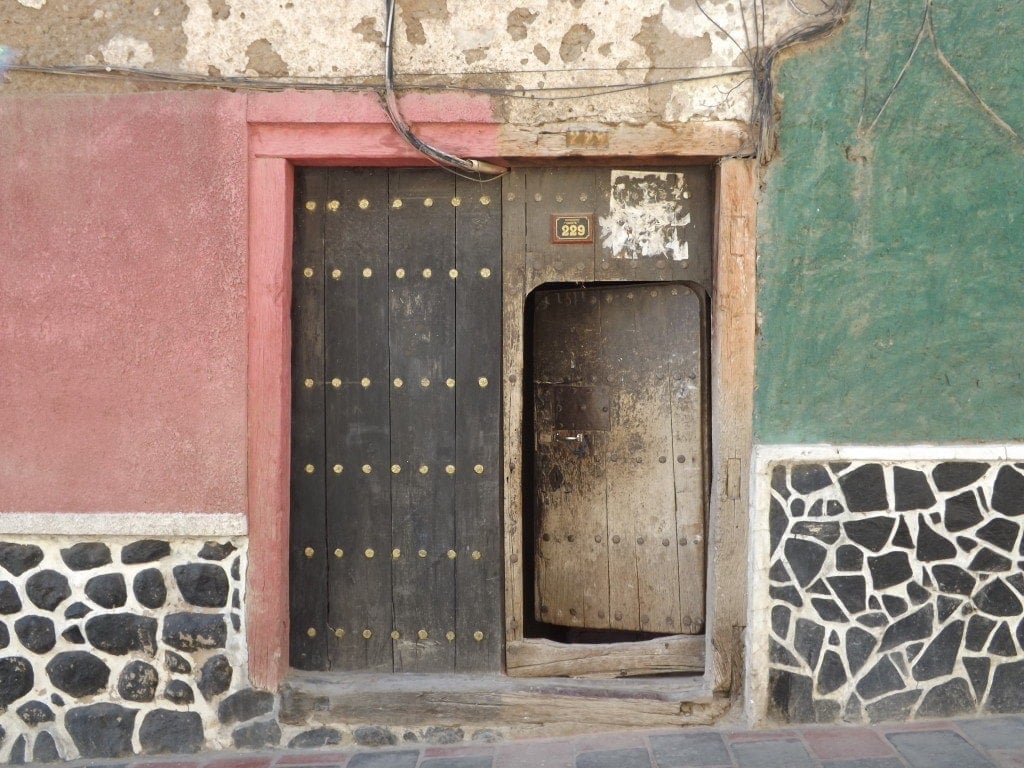
Potosi Mine Tour with Koala Tours
Like most travellers, we were in Potosí for one thing only, the mine tour. Although there’s no silver left, the mine is still very much active, with miners hauling out tons of mineral-rich rock every day. We signed up for a tour with Koala Tours, which cost just 100Bs for a half-day tour, and – like all tours in town – has ex-miners as guides.
Update 2021: Koala Tours seem to be still in operation and have lots of great reviews.
The company picked us up bright and early at 8:30am and drove us to the office, where we were kitted up for our mine tour.
This involved huge, one-size-fits-all plastic trousers and jackets to protect our clothes – ridiculously baggy on me – and thick, rubber boots. We also bought bright red Koala Tours bandannas for 10Bs to tie over our mouth and nose in the mine. I highly recommend you do the same!
Once I was dressed, one of the guides strapped me into a battery pack and helmet with a headlamp, declared me “very miner” with a wink, and we were on our way.
First Stop: Potosi Miner’s Market
We started at the Miners’ Market: a series of small shops and a strip of market stalls towards the edge of town. This is where the miners – who all work for themselves – come to buy everything they need.
To keep costs down, there aren’t really any modern technologies being used in the mine. The miners are still using old-fashioned tools like hammers, chisels, and dynamite. Yep: dynamite, which you (as in, anyone) can buy at the market for just 20Bs. You’ll often find it on the shelf next to 96% pure alcohol. Potosí is a pretty dangerous place!
Our guide, Ronald, gave a funny and very well-rehearsed demonstration of everything on sale, which ended with him holding a lighted match to the detonator of a stick of dynamite, then blowing it swiftly out. Like I said, a dangerous city.
We each bought a stick, along with some big bottles of juice and a bag of coca leaves, to give to the miners as gifts as we looked around.
Visiting the Processing Plant on the Potosi Mine Tour
Next stop was a processing plant, where the miners take the minerals they’ve extracted to be processed and sold. The plant was very ramshackle: more of a wooden shed perched on the side of a hill, filled with whirring metal equipment and a heavy smell of chemicals and rock dust.
The rocks are pulverised, then washed, and finally bathed in chemicals so that the minerals rise.
From there, the minerals are shipped abroad to other companies who process them further and sell them at a vast price mark-up, while the miners are paid a pittance for a horribly tough day’s work.
Life in the Mines
Ronald had worked in the mines for two years with his father, when he was eighteen, but then got the opportunity to start working with a tour company instead.
“I was lucky,” he told us, going on to describe the terrible working conditions of the miners, whose average life expectancy is just 40-50.
Many start at the age of 16 – some even as young as 13 – often taking over from fathers too sick to work, or who have died. As the miners work for themselves, they can choose their hours, but that usually means working ten or twelve-hour days, sometimes six or seven days a week, to get enough money to support their family.
They can’t eat inside the mines, so most miners go all day without a meal. Instead, they chew coca leaves to give energy and quell their appetite.
Work involves chiselling the rock by hand, sorting mineral-rich rock pieces from worthless rubble, and pushing huge carts filled with rocks out of the mine by hand, uphill all the way.
With all the dust in the air, illness and poisonings are a real risk, as are cave-ins and other accidents, especially with all that dynamite around. The work is horrifically hard, and the risk of death is hugely real, but according to Ronald the men are very proud of their work. They have to be strong to work the mines, and a miner earns between 2000 – 6000 Bolivianos a month, in comparison to the 1000Bs average wage in Potosí.
Touring Inside the Potosi Mine
The mine itself was a pretty horrible experience, and while I found it really interesting I can’t say that I really enjoyed it.
We drove about halfway up the mountain, huge and burning orange against the blue sky, and stopped at the entrance to a fourth level mine with an incredible view over the city; metal roofs twinkling in the sunlight between brown and orange hills.
Inside the mine, we found ourselves in a low-ceilinged, clumsy tunnel filled with the hissing noise of pipes, which pump oxygen into the deeper parts of the mine, and the low, metallic thunder of distant wagons rolling along the tracks.
We constantly had to race out of the way of these wagons, hurtled through the tunnels filled with rocks, weighing up to three tons and pushed out of the mine by just two or three teenaged boys.
Meeting the Miners
As we toured the dark, dusty tunnels, we stopped to talk to different miners, all of whom seemed bored and maybe a little unhappy to be watched by curious tourists, but who were all grateful for the drinks and gifts we gave them.
Handing out gifts only made me feel worse about the rich-poor divide: here we are, having flown halfway around the world for a holiday, able to hand out gifts, while these guys work hard all day to earn a fraction of what I do at home. It was a horrible feeling and stank of poverty tourism.
We thought we might be shown the sugar-coated, tourist version of a working mine, but if we were I don’t want to see a real mine.
There were sections where we had to cross huge, black drops on just a thin plank of wood, or climb up a four-foot clump of rock into a tiny gap, surrounded by sharp bits of rusty metal and jagged rock corners.
There was so little air, and so much dust, that my throat was burning with chemicals and I was finding it hard to breathe, so when Ronald announced that it was time to leave I was completely relieved.
Final Thoughts
It was an interesting and eye-opening experience, and in a way, I’m glad I took the Potosi mine tour. It’s important to be more aware of poverty and poor conditions in the world. But poverty tourism, handled improperly, can do far more damage than good.
I hope the tours do what they promise, that they help raise awareness of the terrible working conditions in Bolivia. Employing ex-miners as tour guides seems like a good thing, keeping injured or ill people in a job.
Koala Tours use a portion of your ticket price to help miners buy food and other necessary supplies, so the tours do at least some small amount of good. And if all the tour guests bring gifts, I hope that’s of genuine help to the miners.
Honestly, I can’t say that I enjoyed the Potosí mine tour. It was a sobering experience, especially after a morning spent giggling around the miner’s market. But it’s a mixed feeling, because I’m also glad I went, and it was a truly eye-opening experience.
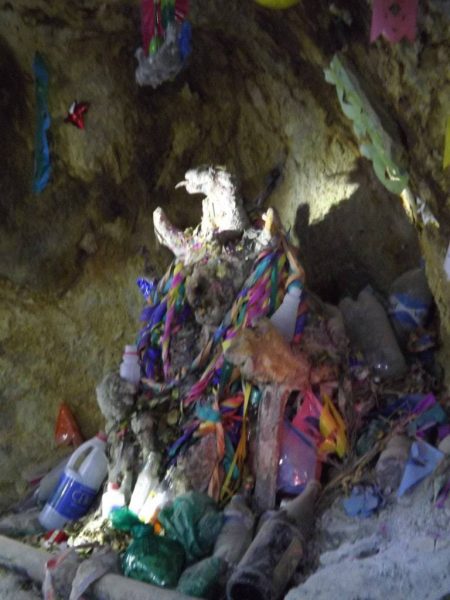
Potosi Mine Tour: More Information
Koala Tours cost 100Bs. There are two tours daily, 8:45am and 1:30am, and tours last around four-five hours.
the Potosi Mine Tour is not recommended for anyone who suffers from claustrophobia, or who feels uncomfortable in small spaces, in the dark, climbing up rocks, or who is easily upset by poverty.
If you can’t make it to Bolivia, but want to know more, watch The Devil’s Miner, a documentary film about a young boy working in the mines.
Charity Kinder Not Life is working to help prevent child labour in the mines.
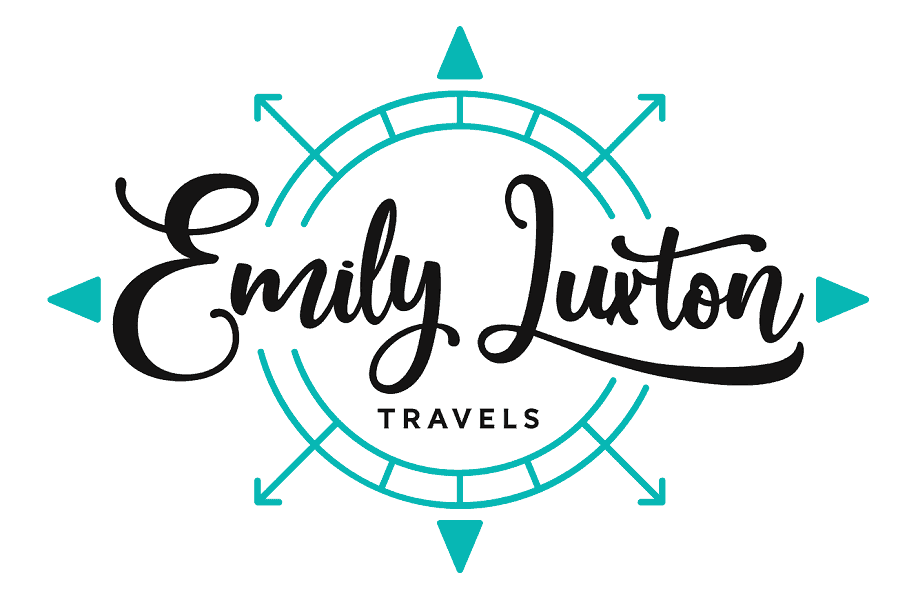
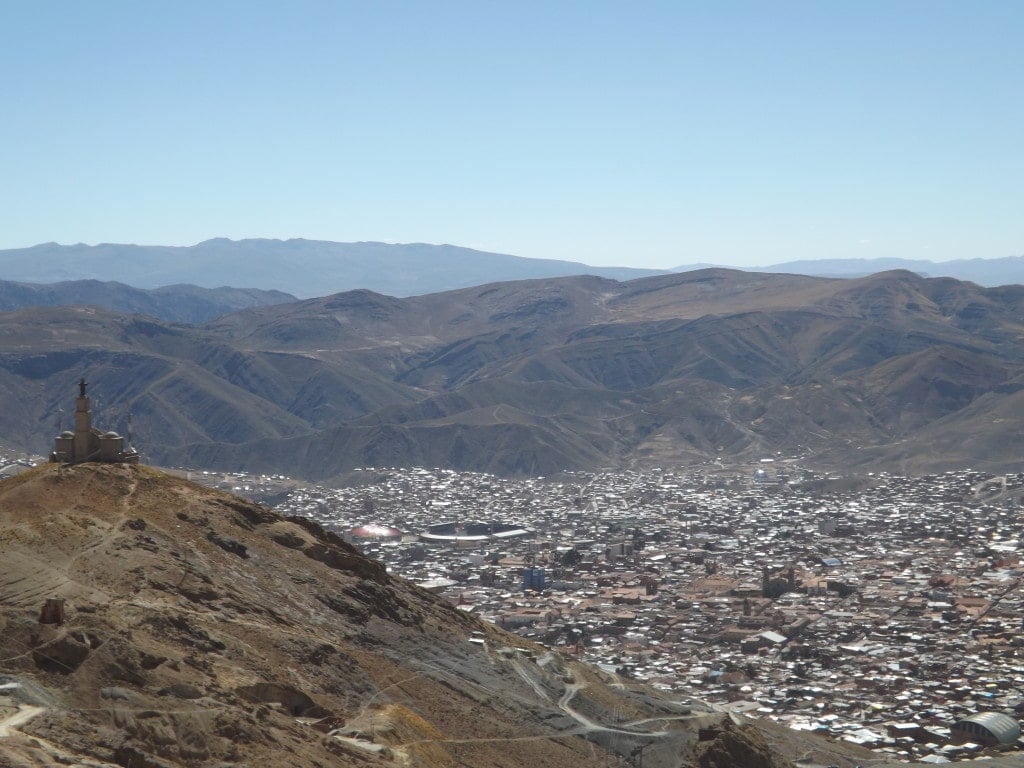
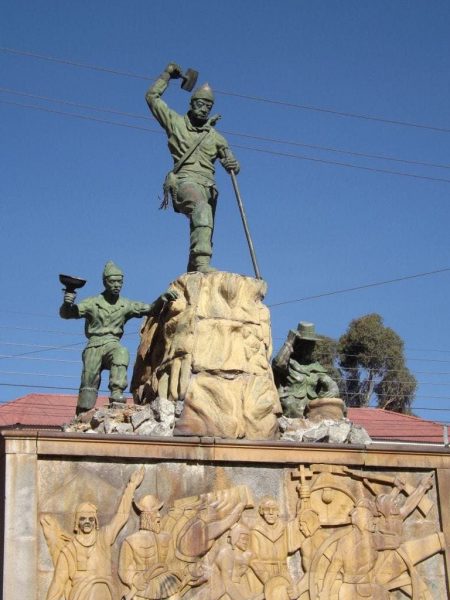
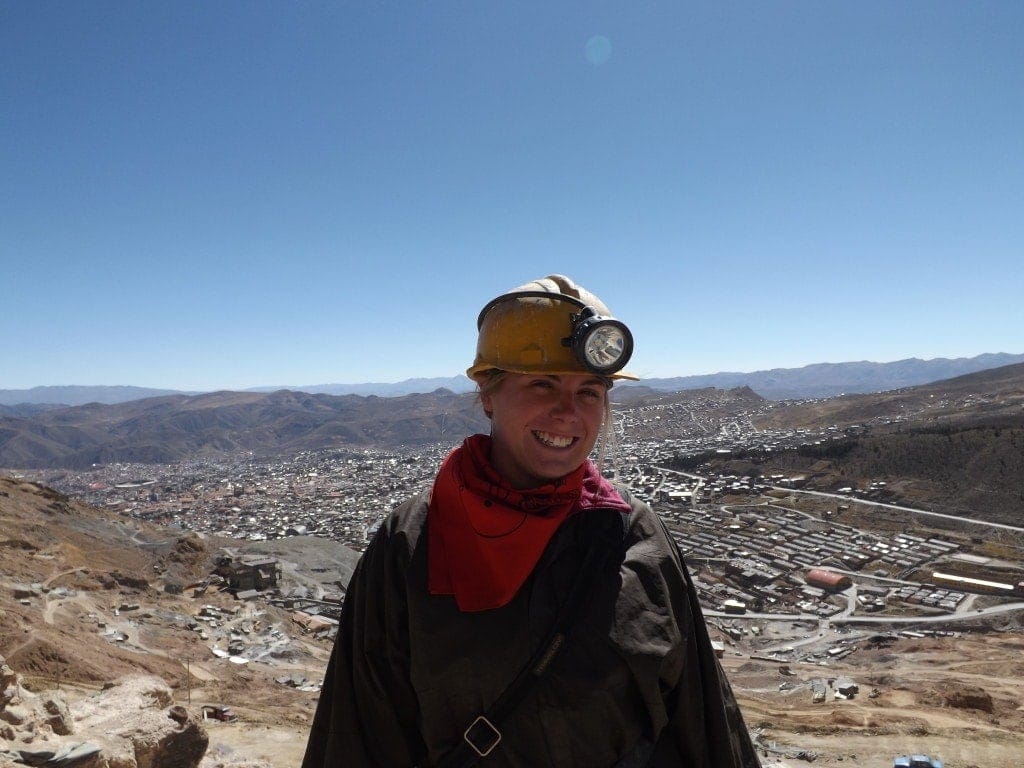

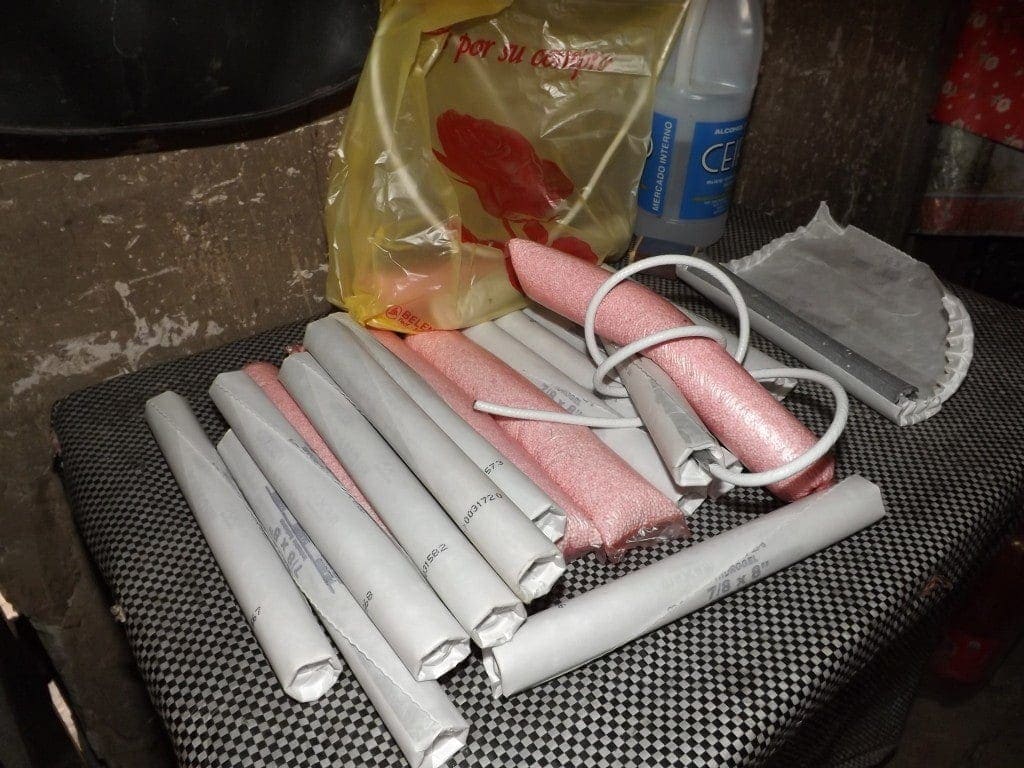
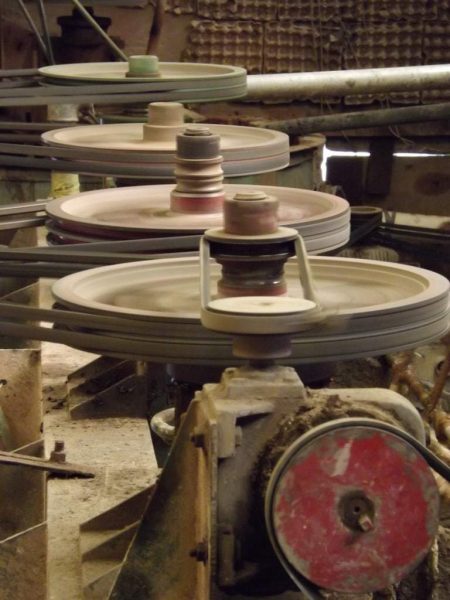
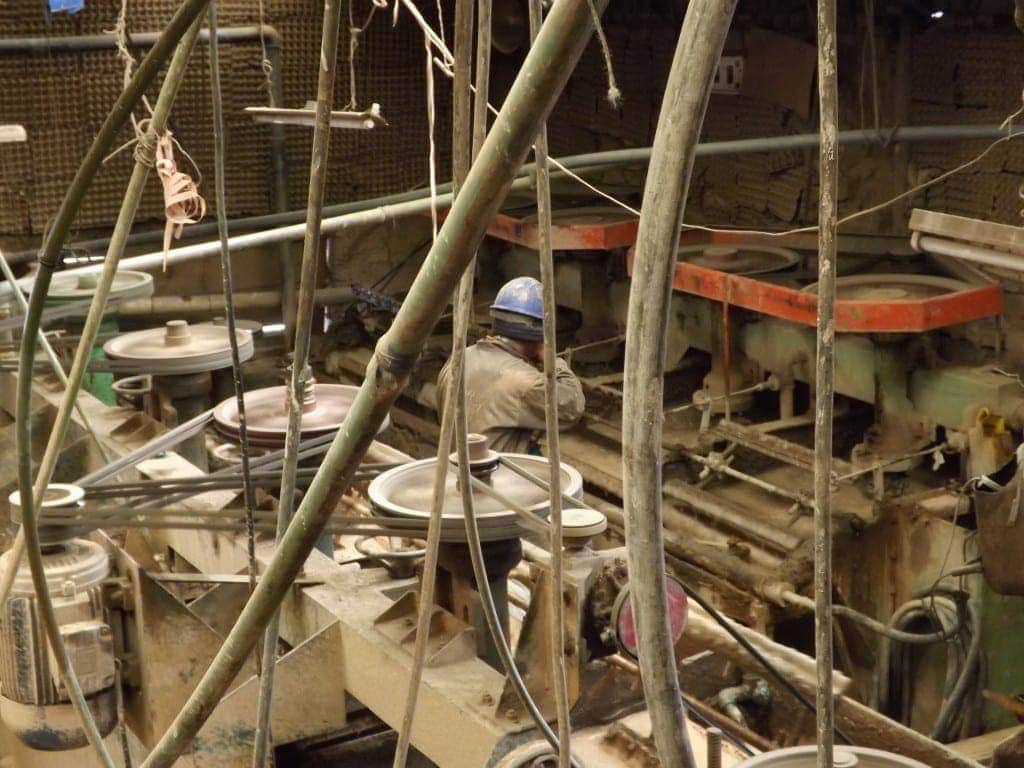
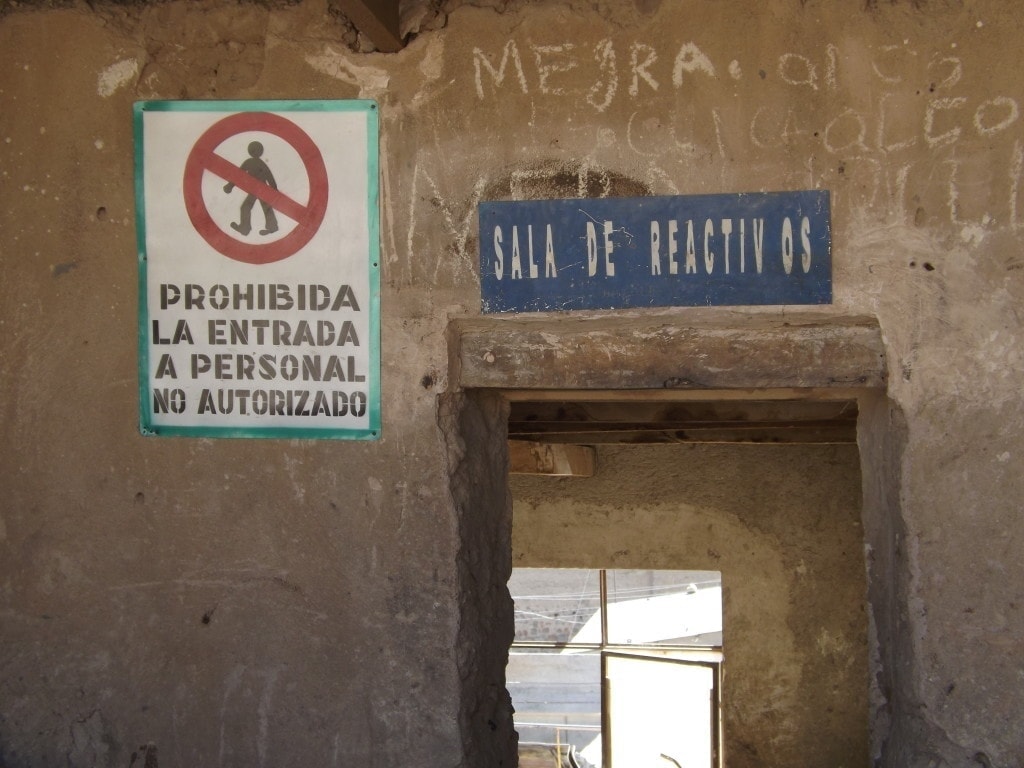
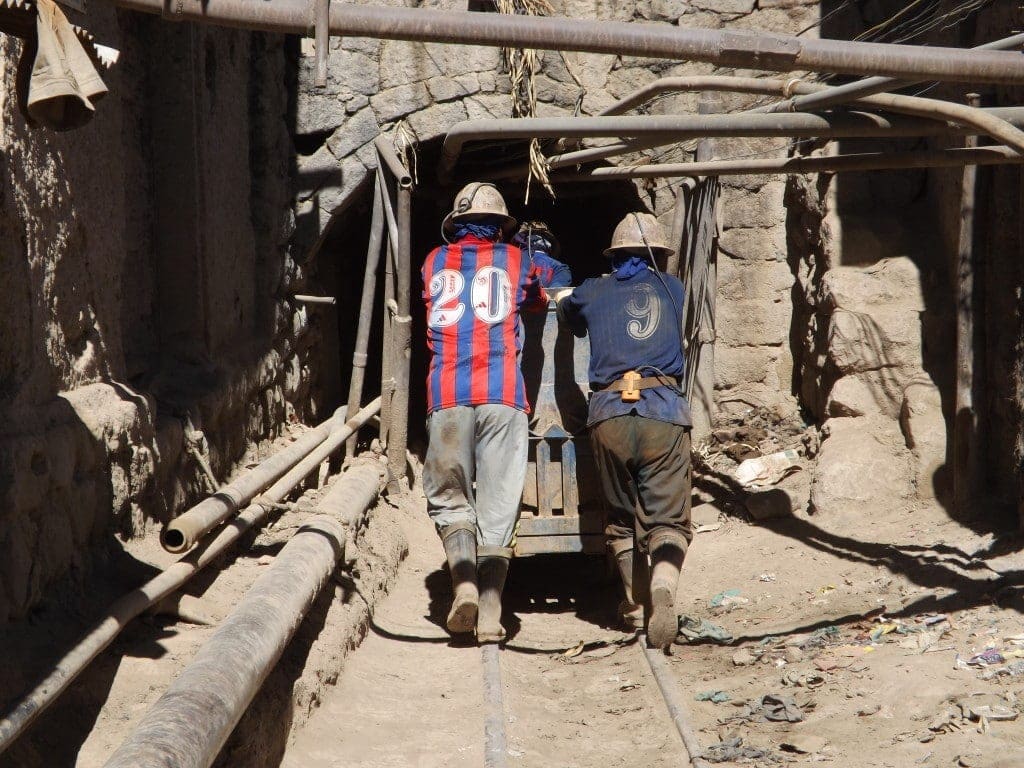
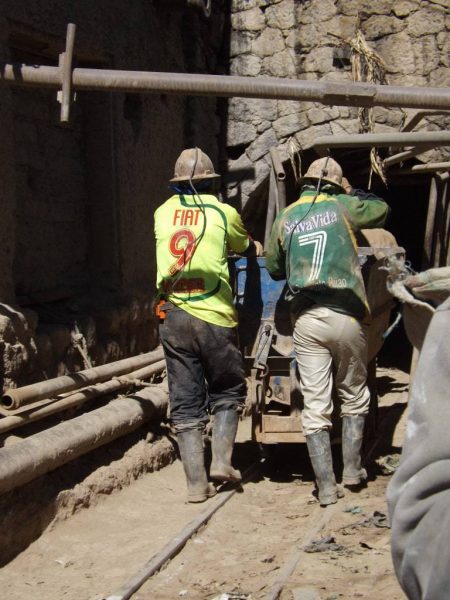
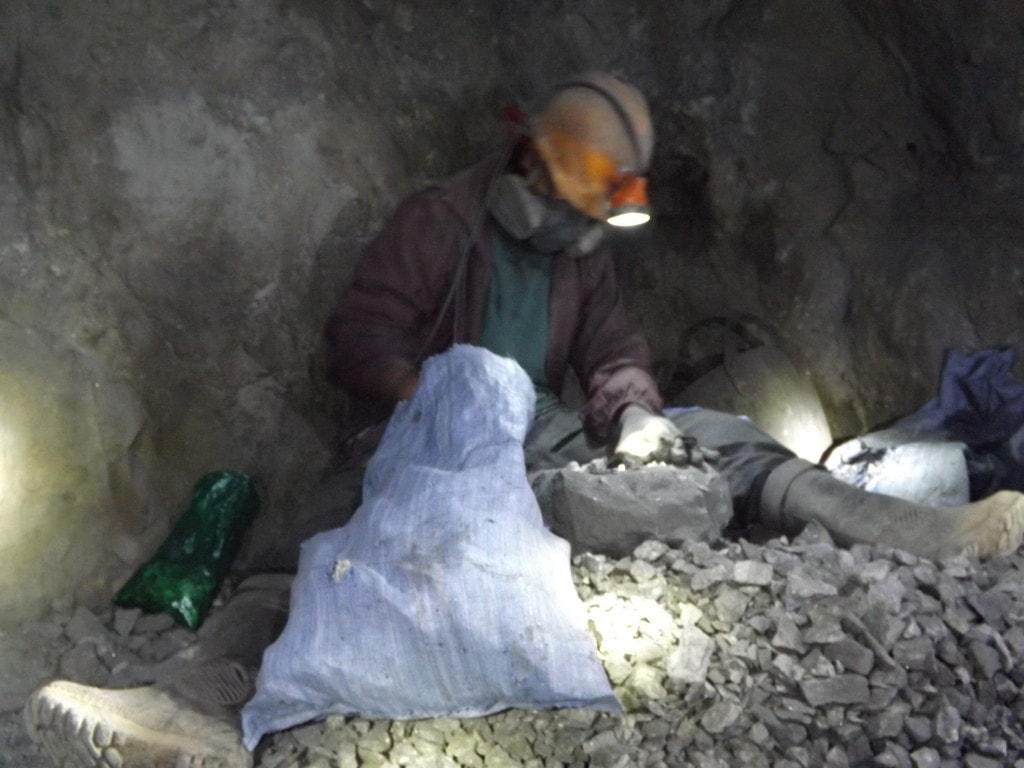
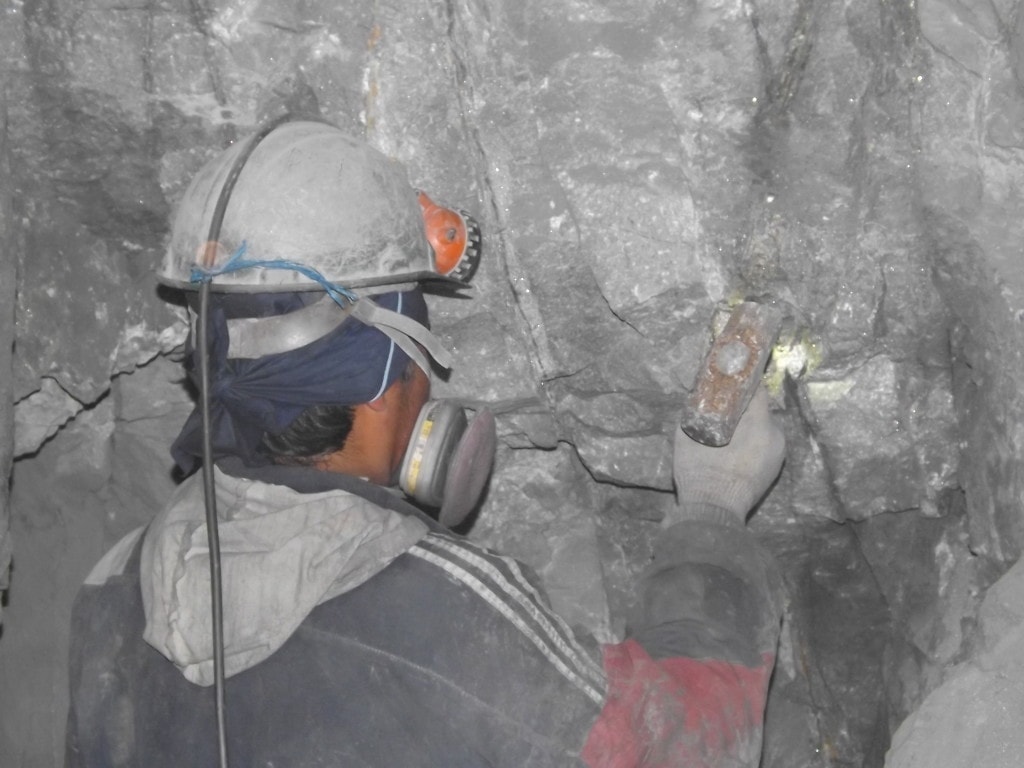
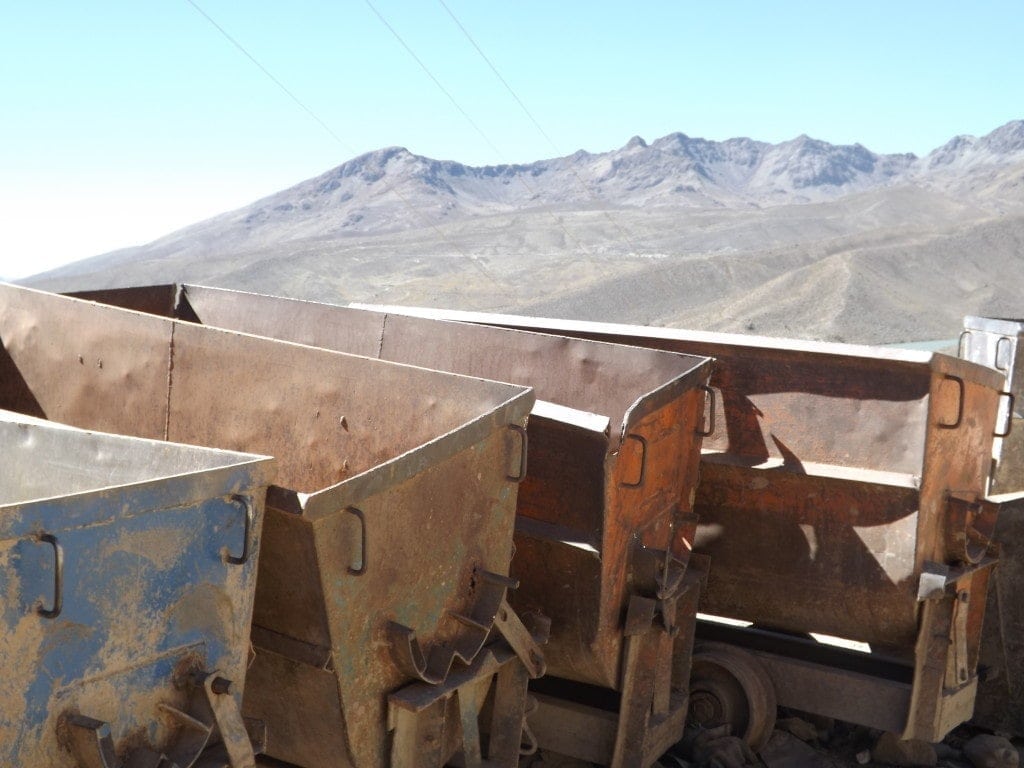
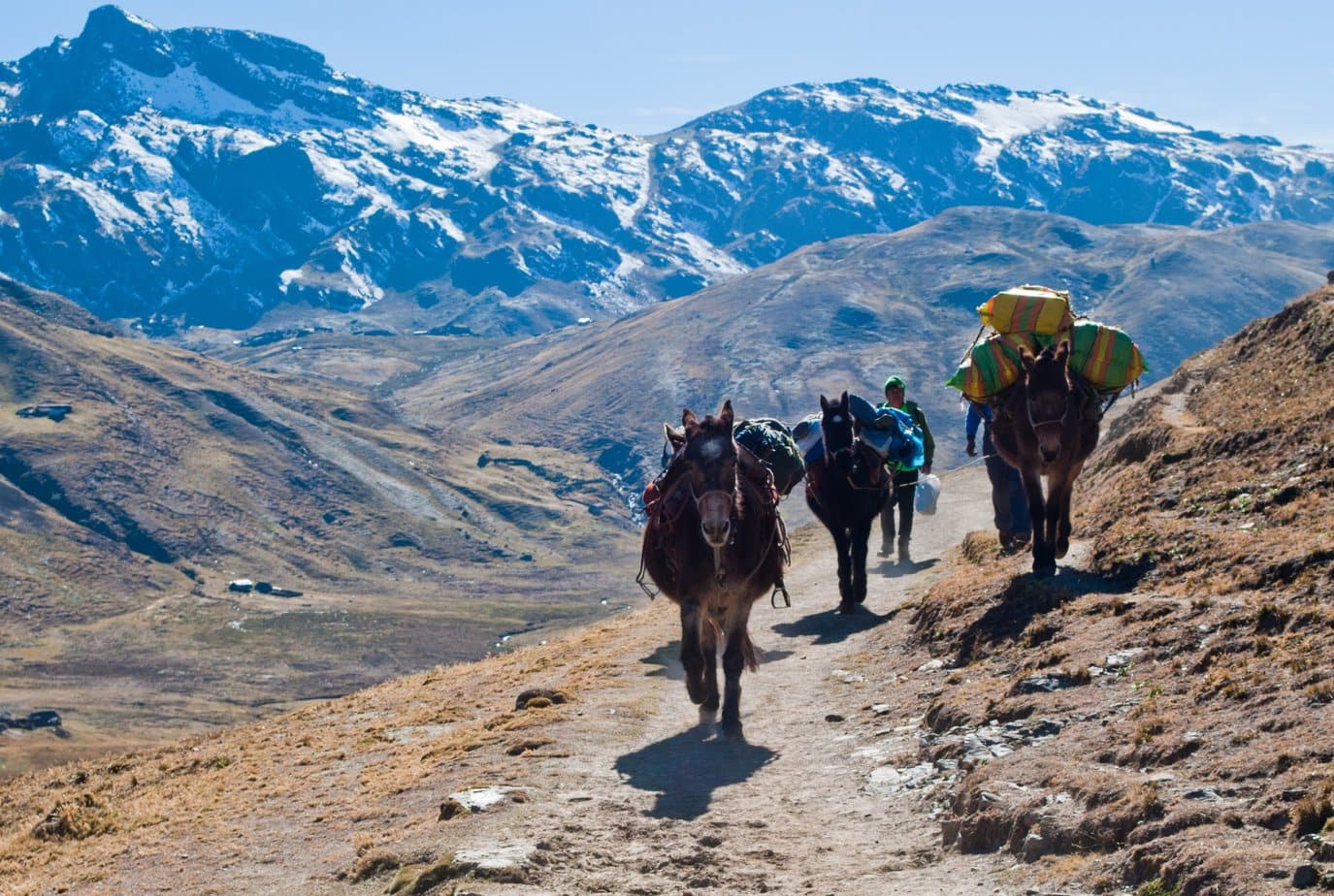


wow looks really interesting!! Thanks for sharing :)
Thank you! Interesting yes, but a pretty horrible experience too – so much poverty and actually being in the mine was claustrophobic and uncomfortable!
wow.. that part about going over deep pits on just a plank of wood! f*%k that!! aha! good on you tho for not giving up and wimping out. Cant imagine working in those conditions :(
It was horrible. The guide asked if anyone suffered from vertigo, which I do, but seeing how those poor miners had no choice but to work in those conditions I was too embarrassed to say yes. Next thing I know I’m wobbling around on a skinny plank above pitch blackness – it was horrible! I just felt terrible for those poor guys working the mines, it’s so unfair.
My dad would find the mine tour fascinating! We did a mine tour in British Columbia once and my mom freaked out due to claustrophobia … so I guess it’s not for everyone!
It was very uncomfortable – narrow spaces, low ceilings, and so much dust in the air. I’m not claustrophobic but it did get to me massively!
Hmmm, I don’t know, I think I would have found this very uncomfortable too. It’s such a fine, thin line between being an interesting tour and giving the workers there an extra income (if that is where it went) and being part of what I would consider poverty tourism (similar in ideology to the slum tours in India), especially with it being a working mine. Imagine ourselves in our worst jobs, being photographed by a load of grinning tourists. Very interesting post.
Thank you! The tour company claim to give some of the tour price to the miners, but you never know. At least we took them all drinks, cos they can’t carry anything with them in the mines so otherwise have no food or drink all day. The company we went with we’re working with a Dutch charity which helps stop kids going to the mines by supporting families where the fathers can’t work, and providing schooling for miner’s children, so I’m hoping that there will be improvement soon.
Fascinating :O I do hope the match to the detonator act was foolproof or else… Whoops :P
Pretty sure it wasn’t! Based on Bolivian health and safety standards, I’d guess it was just a regular stick of dynamite and a regular match, and he just relies on his own hands to avoid an explosion!!
Oh myy!! I shouldn’t be surprised (I’m from India and standards are similar here) but it’s still quite freaky!
That is crazy that anyone can just purchase dynamite. Like you and Michael Huxley I would have been uncomfortable too though I hope the tour and the Dutch charity will help improve the overall standard of living for the community.
Me too. It seemed like things were maybe getting better from how they used to be, but it’s still so unfair. Some company overseas makes huge profits, and these miner’s get the equivalent of about £200-£600 a month for such dangerous work. The only reason they don’t have more modern tools is to keep costs down for the companies that buy the minerals.
Very brave of you – I would have been super uncomfortable. But again, you brave your fears just all the time! Good for you and great post.
Thank you :) I’ve not felt claustrophobic before so I didn’t think it would be so bad – but I don’t think anyone enjoyed being in that mine!
Dangerous work I believe. Great post with a lot of information.
Thank you! It is super dangerous work, I couldn’t believe the poor conditions.
Your incredibly brave! Not sure I would do it but looks like an interesting tour though! :)
Interesting yes – but sooo uncomfortable! I don’t really recommend it to be honest!
Liquor and dynamite – two things that my mother always warned me about mixing! I’ve known about this mine for a long time but have never seen pictures or read about a modern experience, so I really enjoyed this post, Emily. Also, your shot with the mountains in the background is very nice – conveys a bit of remoteness on the Potosi mine.
Thanks Dave! I still can’t believe that just anyone can stroll into a market and buy dynamite! It was a crazy experience, definitely one of the most memorable in Bolivia!
I totally understand you wanted to make this experience but couldn´t enjoy it. The view from the mountain is beautiful.
Thank you! Exactly how I felt – wanted to do it, hated doing it! Such a bizarre and upsetting experience!
So even though I have claustrophobia, I feel uncomfortable in small spaces and climbing up rocks and I can get upset by poverty, I still would want to take this tour: so interesting and we shouldn’t close our eyes to situations like these. Hope I can find the film The Devil’s Miner, would love to see it. Tx for sharing this interesting post!
Thank you! It was a real eye-opener, that’s for sure. I haven’t watched Devil’s Miner yet as I’m still away, a friend of mine saw it in Sucre and she said it was worth watching (pretty upsetting though). I’m going to locate a copy once I’m back in the UK, might have to have it shipped in though!
How did you manage to get such good photos of the miners and everything underground? Mine are just rubbish…Great post though!
Those are two decent shots out of about a hundred! It was so tricky to get good shots down there with all the dust etc. Thank you though!!
Don’t think I would have been able to do it! Underground and tight spaces are not my favorite things! Good for you!
Thanks! It was horrible to be honest, but I’m glad I did it!!
Holy cow…dynamite! I’d say my mind is blown but that could seem punny ;P
Haha gotta love a good pun! So crazy to see dynamite up close like that – although part of me would have liked to see it in action!
I remember doing that same tour a few years ago when I was in South America and I couldn’t believe how bad conditions were. It may be hard to witness something similar, but it’s important to spread awareness. Thanks for this post.
Thank you! I felt like it was important to do the tour and see what the conditions were really like!
I have read about these mining tours in a few other blogs too. It’s sad to know that health and safety of workers are not given importance at all.
I agree, so horrible compared with our own working conditions!
i’m sure a very interesting and enlightening experience, I was meant to go a few years back but they were on strike and had been throwing dynamite at buses so we were advised not to go. I cant imagine what the conditions are like for them, must be so tough!
I font blame them for striking – although dynamite as buses is going overboard. The conditions are terrible, you have to see then to really believe it.
I enjoyed Potosi, spent four nights there last year around the Easter holiday. I had to skip the tour though. I was told by two different tour operators that it wasn’t recommended to anyone with breathing problems. I have mild asthma; that coupled with the altitude kept me out of the mine.
It’s definitely not suitable for someone with breathing problems – the dust in the air is unreal. It’s not like you missed a fun tour, the whole thing is pretty horrible (or I thought so) but it was eye-opening! I liked Potosi too though, thought I was the only one!
Thanks for speaking up about not liking the tour! But at least you can say that you have seen “real life” … sometimes we just need to see things like these but then again, maybe it’s better for us not to…
Thank you! I felt like it was important to do the tour and see what things are really like – I knew it would be bad but was still shocked by how bad. And I guess it’s important to be honest – I think a lot of people really wouldn’t like that tour so I thought I’d let people know how I found it!
Great post. It’s very refreshing to here a good honest review on the tour, even if it means saying you didn’t enjoy it. I would have been intrigued to check it out, given the significant historical impact it had on the pillage of South America during colonization times, but unfortunately I missed our while in Bolivia. Cheers!
Thank you! So many people had said the trip was awesome, but I knew a lot of people like me would hate it as much as I did, so I wanted to set the record straight!
I think when people start complaining about their jobs, they should be taken to a mine like this for contrast and appreciation lol glad you enjoyed it, it definitely seems like a worthwhile experience.
Haha I agree with you – suddenly my boring customer service job in a comfy office doesn’t seem anywhere as bad as I used to make out. Still don’t want to go back to it when the trip is over (hopefully I won’t have to!), but at least it won’t literally kill me!
The moment I saw the title I was like NOPE! Not for me. I am claustrophobic so you couldnt pay me to go down the mines or crazy tunnels like that but I love that second shot of the door and beautiful designs on it. Love your honest opinion about the tour too :)
Haha, it definitely is not for anyone even a tiny bit claustrophobic! It’s a horrible place – even when there’s room to stand the dust is so thick that it still felt like a tiny, narrow space.
Hi Emily,
Thank you for sharing your experience of the mines. We’ve been researching into it a little more recently as we get closer to Bolivia, and we’re starting to come down on the side of ‘don’t do it’. Although we think we could get some awesome photos, it would feel extremely exploitative and safari-like, rather than an enjoyable experience. I can’t even begin to imagine the life and working conditions of these miners and it sounds like the tours etc don’t do much apart from add a very poor plaster in terms of help and support.
Cards on the table – would you say we should go?
Personally, I really didn’t enjoy it and I would definitely say that if you’re worried about it – don’t go. I’m not sure that it was exploitative, but it felt horribly voyeuristic and yes, a little like a safari. I felt like I was part of a group of rich people coming down to have a look at the paupers, “oh how quaint, they’re doing jobs that will kill them”. It was interesting to see in the same way that it’s ‘interesting’ to watch the sad clips of suffering children around the world on Children in Need – horrible but eye-opening. I think it’s important for more people to be aware of the situation these miners are in, but I don’t think the best way to raise awareness is to parade them in front of guffawing gap year students. If you want to learn more about the miners then do visit Potosi and maybe walk around the miners’ market and talk to people, but avoid the tour if you’re not sure. If you do go for a tour, make sure you choose one which donates the profits to the miners or their families.
Let me know what you decide either way. And enjoy Bolivia – I loved it!